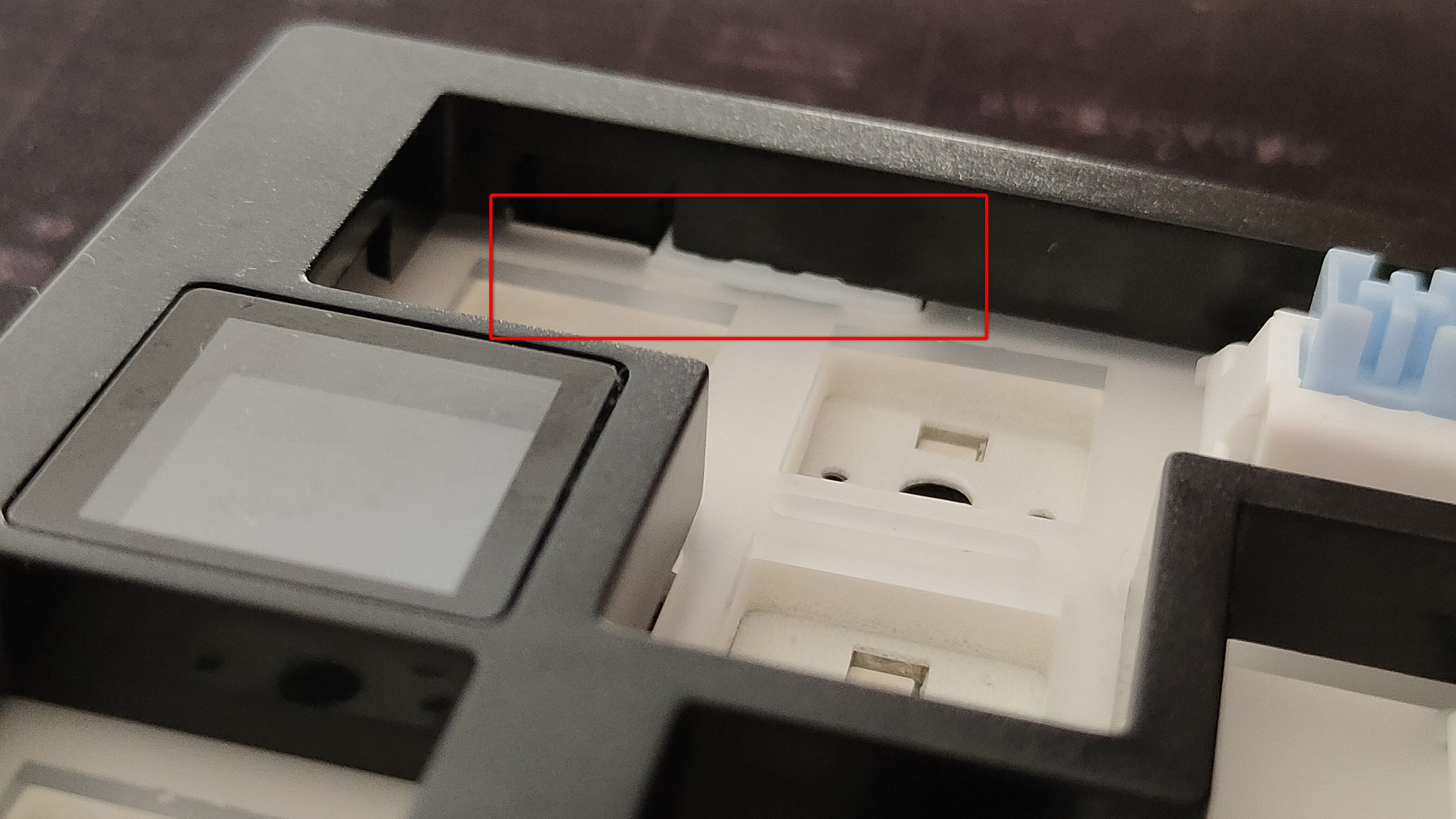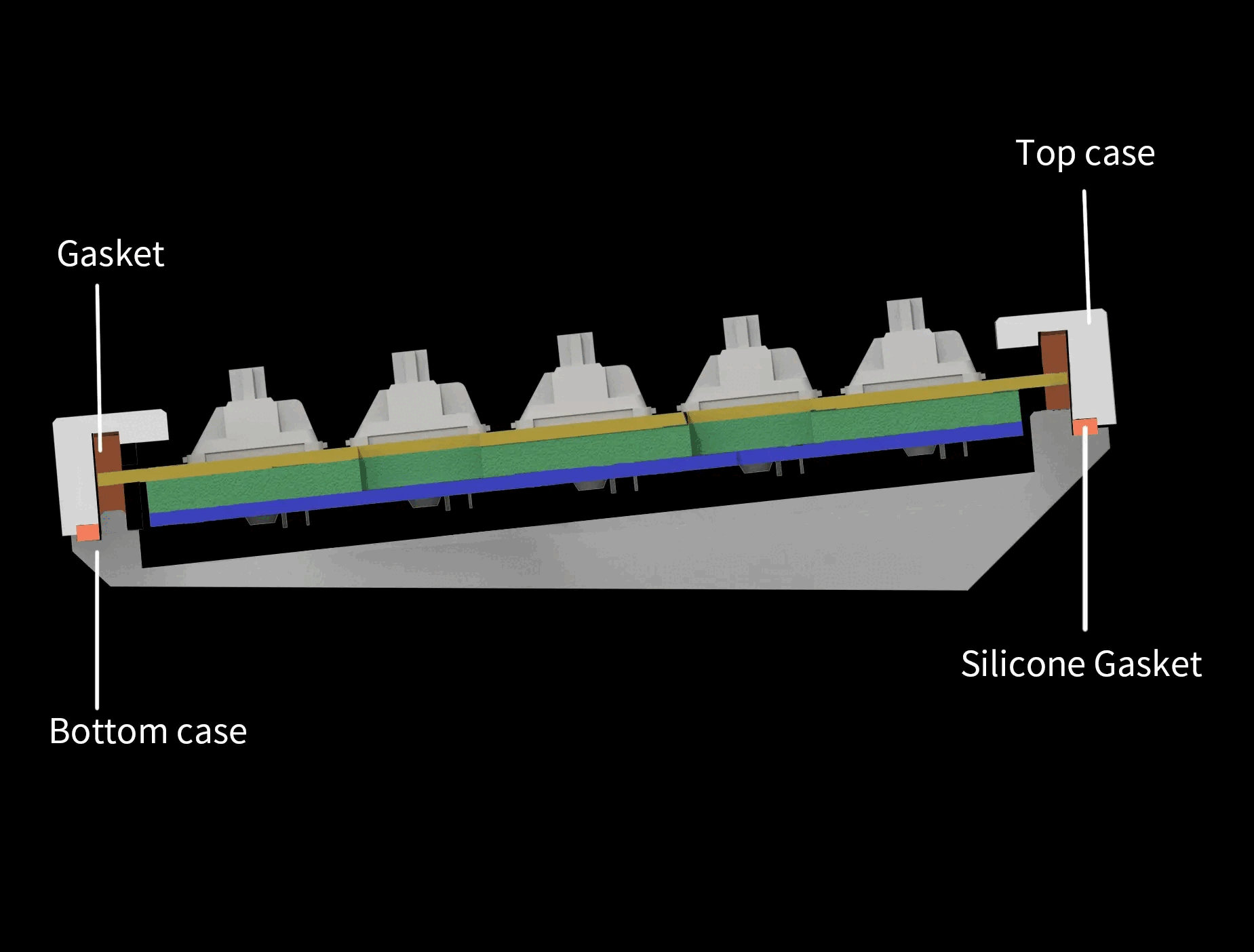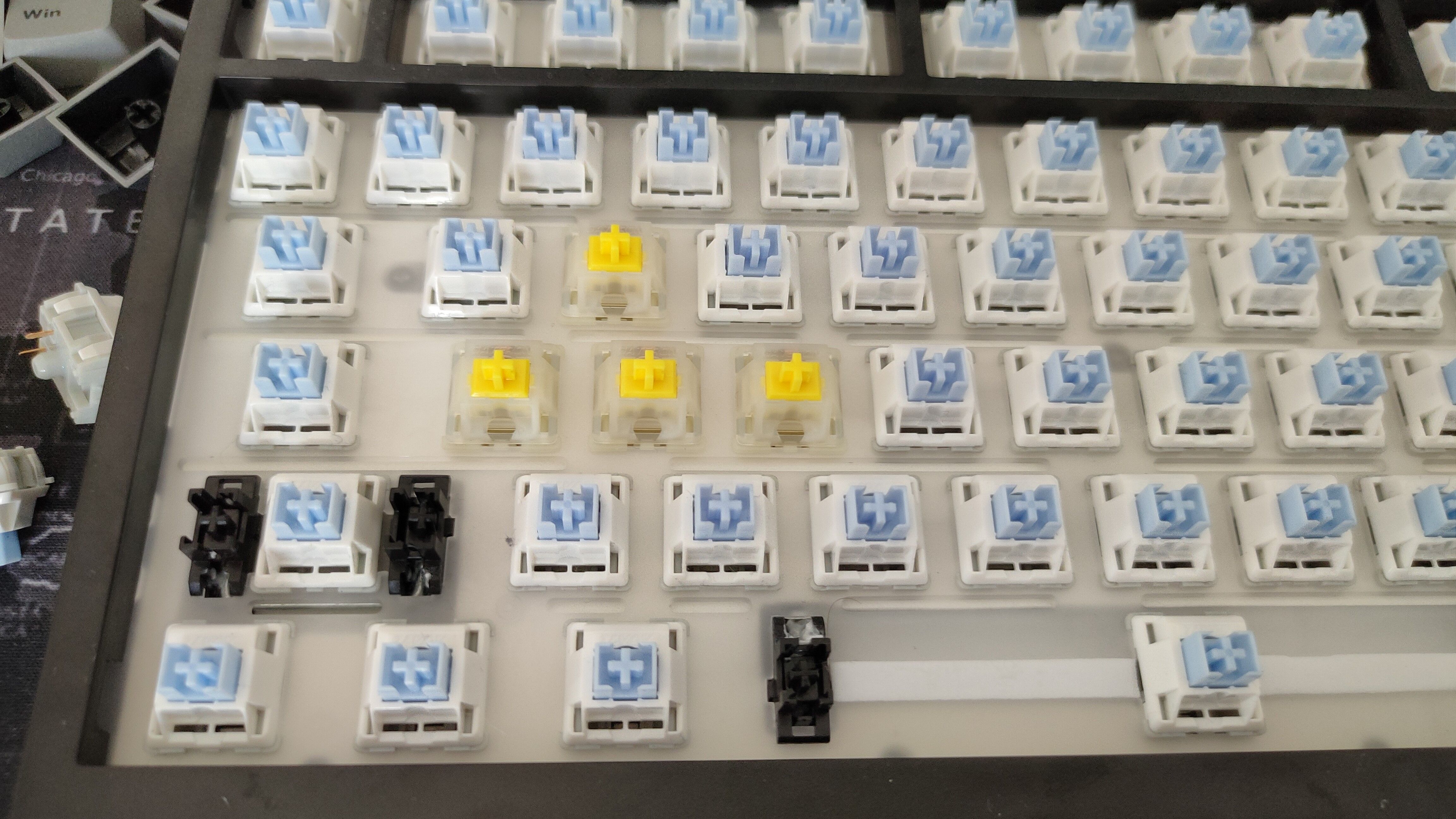Summary
- Gasket mounts offer a softer, bouncy typing experience compared to other mounting styles.
- Gasket-mounted keyboards absorb sound, making them quieter and allowing the switch sound to stand out.
- Gaskets can address manufacturing tolerances, provide DIY opportunities, and are becoming more affordable.
Buying a new mechanical keyboard is exciting, but with all the different features out there, it’s easy to get overwhelmed. One of the most important factors to consider is the plate mounting style. Recently, the gasket mount has garnered significant attention among enthusiasts.
What Is a Gasket Mount?
Before you can understand what a gasket mount does for your typing experience, it helps to first understand what mounting styles in keyboards are. In simple terms, a mounting style describes how a keyboard plate (aka backplate) is mounted inside the keyboard.
The plate is a solid piece of metal, plastic, carbon fiber, or some other material that holds all the switches in place. It’s different from the PCB, though plateless or PCB-mounted keyboards do exist. However, these are rare, as they tend to be significantly less rigid and provide few advantages.
The most common mounting styles are top mount, bottom mount, tray mount, sandwich mount, integrated plate, and gasket mount. Author Thomas Baart created a cheat sheet that provides a high-level overview of these different mounting styles.
In a gasket mount, small pieces of soft material (usually silicone, rubber, or poron foam) act as gaskets; they’re placed between the top frame, case, and plate to provide a softer typing experience. They’re most commonly in the shape of the letter U and are placed along the edges and corners. The number of gaskets and performance varies between keyboard models.
The gasket between the top frame and plate.
It’s worth noting that some keyboards, like the Keychron Q8, feature a double-mounted gasket design, with an additional gasket between the top frame and case. This type of gasket doesn’t affect the typing feel, though. Instead, it acts as a sound dampener, similar to a force break mod. It minimizes the loud, pingy resonance found in metal keyboards by removing metal-on-metal contact.
Why Keyboard Enthusiasts Love Gasket Mounts
There are many reasons to pick a gasket-mounted keyboard over other mounting styles. The biggest benefit is the slightly bouncy, cushioned typing experience. The gaskets function like shock absorbers, so even if you slam the keys with each keystroke, the gaskets will absorb a good chunk of the impact. When the key bottoms out, it almost feels as though the keycap landed on a soft pillow rather than a solid plate.
Sound is another reason why keyboard enthusiasts love this mounting style. Since gaskets absorb sound, there aren’t any unpleasant resonances coming from the case or frame. The keyboard itself is quieter, which allows the sound of the switches to stand out. I tested a few different switches in the same gasket-mounted keyboard, the Ajazz AK820 Pro. Depending on the switches, the keyboard’s sound profile shifted from marbly and creamy to thocky and silent, with no additional modifications necessary.
An often-overlooked benefit of gaskets is their ability to address manufacturing tolerances. Enthusiasts expect their keyboards to be fitted tightly and fine-tuned for sound and feel, which isn’t always achievable with budget keyboards. Gaskets can help mitigate issues caused by minor manufacturing defects in the top frame or case.
For those who love to DIY and take their keyboards apart, gasket-mounted keyboards provide the perfect opportunity to do just that. While it’s extremely hard to add gaskets to a keyboard that doesn’t have them, a gasket-mounted keyboard allows you to try almost anything. You can add extra gaskets, replace them with different materials, or even remove them entirely.
The only drawback of gasket-mounted keyboards used to be their price, but it looks like that’s no longer the case. For instance, the Keychron C3 Pro retails for around $40. I’m sure that you can find even cheaper gasket-mounted keyboards, but bear in mind that not all gasket-mounted keyboards have good gasket performance, as it all depends on the quality of the gaskets and overall keyboard.
Why Should You Care About Gasket Mounts?
The simple truth is that gasket-mounted keyboards aren’t inherently superior or inferior to other mounting styles; it’s just that many of us agree that gasket-mounted keyboards subjectively feel and sound better than other styles.
I used to use a Corsair K70 every day, which features an integrated plate design where the top aluminum frame also acts as the plate. As a result, the keyboard is extremely rigid and heavy, offering a typing experience I once considered “premium.” That all changed when I tried this cheap little gasket-mounted keyboard, which is an absolute joy to type on.
Gasket-mounted keyboards provide a cushioned sound and typing experience that tends to make the keyboard slightly more enjoyable to use. However, they’re not inherently superior to other mounting styles, and you shouldn’t only consider gasket-mounted keyboards. You might end up disliking the soft feel of gasket-mounted keyboards, so definitely try keyboards with a few different mounting styles to find your favorite.



